How to grow Echinacea
Their generic name comes from the Greek word ekhinos meaning hedgehog due to its spiny central disc of the flower.
Commonly called cone flowers they are native to Eastern, central and North America where they grow in wet to dry prairies and open wooded areas.
With Echinacea purpurea being used in complimentary medicine for centuries to reduce symptoms of the common cold and boost the immune system, the majority of the genus are grown for their ornamental appeal.
Echinacea used to be called Rudbeckia until scientists noticed some key differences. Whilst they are closely related and still within the same family, subfamily and tribe their flowers are different.
Echinacea had pink or white flowers with a central coloured or mahogany cone. In the early 2000’s new hybrid echinacea’s became available in an array of colours red, orange, white, pink, green, purple and yellow. Rudbeckias are always yellow with a dark brown central cone.
Echinacea never have dark brown or black central cones of the Rudbeckia. Echinacea cones are orange, green or mahogany brown often changing colour as the flower matures.
Double flowered echinacea’s have a cone to start off which becomes covered with a array of petals as the flower matures.
Echinacea cones are prickly as in its Greek derived name hedgehog, but Rudbeckia cones are softer – velvet like to touch.
Echinacea are herbaceous perennial plants preferring dry soils meaning they are also drought tolerant for the easy-care gardener. Growing from a tap root except Echinacea pupurea, they have erect stems up to 1.2m with a flower atop each stem. Its leaves are normally hairy with a rough texture and are linear, lanceolate or elliptical in shape with an entire margin.
Echinacea has no reported toxic effects and is well known for attracting bees and other pollinating insects and birds.
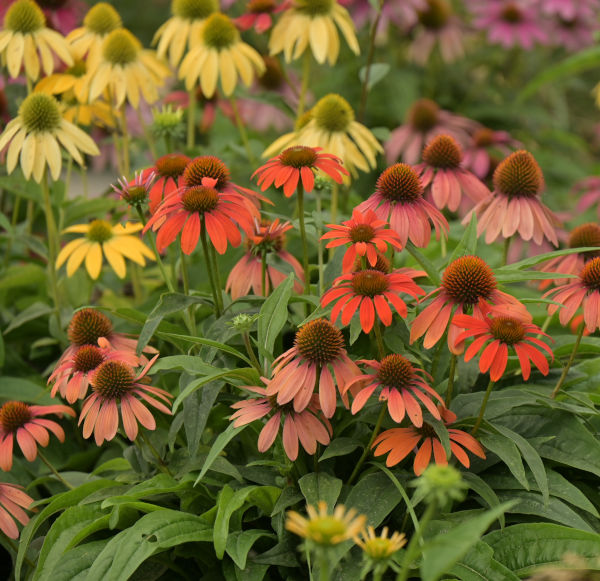
Zantedeschia is a genus of flowering plants from the family Araceae and is native to southern Africa. With a rich history dating back to the Ancient Romans, these deciduous or semi-evergreen perennials have been used as a symbol of celebration. Zantedeschia was Named after Professor Giovanni Zantedeschia, an Italian botanist.
There are two main forms of Zantedeschia: hardy and tender. Hardy forms of the plant can be grown outdoors, enjoy moist soil and full sun or partially shaded conditions - these are known as Arum lilies. Tender forms of Zantedeschia prefer being grown in containers or pots and should be brought inside over the winter - these are known as Calla lilies.
With tuberous flora in all colours from whites, yellows and oranges to deep reds and purples, Zantedeschias are not to be overlooked in any garden, as long as they have sufficient sunlight to grow in.
Ready to learn more about growing Zantedeschia? Read on for all there is to know...

Key Information
Soil pH
Position
Hardiness

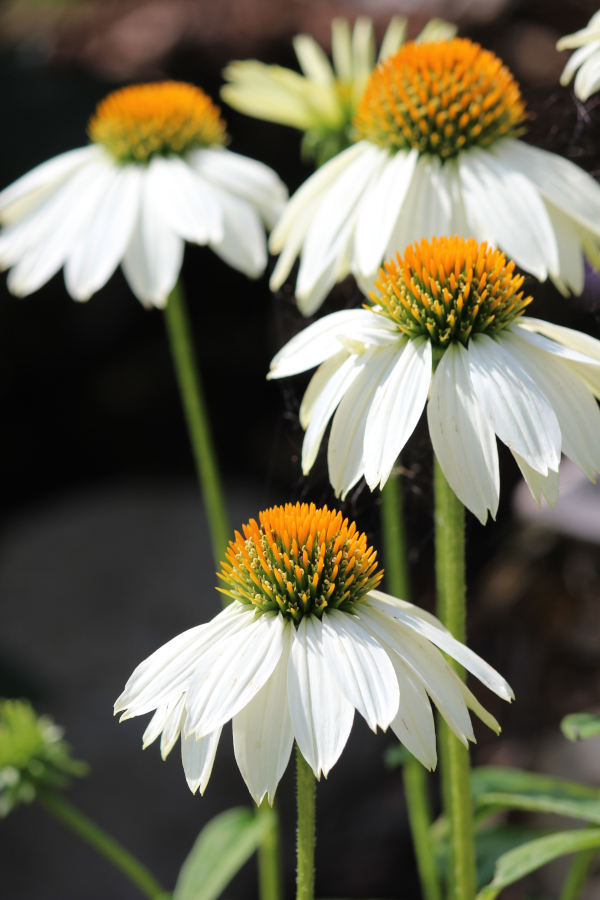
Where & when to plant Echinacea
Position - Full sun/ Dappled sun.
Soil - Well-drained soil which can be slightly acidic to slightly alkaline. Will grow in chalk, loam or sand.
Flowers - Summer.
Horticultural Divisions - below here we list out the most popularly cultivated species and hybrids available in the U.K.
| Species | Common name |
HARDY – cold winter (H5/ -10°C to -15°C) Grow anywhere in the UK
| Echinacea angustifolia | Narrow-leaf coneflower |
Echinacea atrorubens | Topeka purple coneflower | |
Echinacea laevigata | Smooth coneflower | |
Echinacea pallida | Pale purple coneflower | |
Echinacea paradoxa | Yellow coneflower | |
Echinacea purpurea | Purple coneflower | |
Echinacea sanguinea | Sanguine purple coneflower | |
Echinacea serotina | Narrow-leaved purple coneflower | |
Echinacea simulata | wavy leaf purple coneflower | |
Echinacea tennesseensis | Tennessee coneflower |
Echinacea can be planted all year around when purchased grown in pots, however can be more prone to rotting off if planted in autumn and winter. Bare rooted plants are best planted in early spring when the ground is not frozen or waterlogged.
If container grown plants are planted out during the active summer growing season make sure that they are watered regularly until the plant has settled into its new location. Water at soil level rather than the foliage.
Echinacea are ideal in cottage garden schemes, coastal gardens, wildlife gardens, flower borders and cut flower gardens.
How to plant Echinacea
- For planting in the garden, dig the soil area removing any large stones and weeds and breaking up any lumps. Mix in some organic matter, ideally leaf mould, though manure or garden compost are also fine. Rake level and firm with your heels. Rake level again.
- Water plants well and allow to drain before planting.
- A good tip is to dig a hole twice the size of the root-ball. Fill with water and allow to drain before placing in the plant which is especially good for summer plantings.
- Remove the plant from its pot placing the plant in the hole, ensuring the top of the root ball sits level with the surface of the soil. Too low and the plant may rot, too high and the roots can dry out. If bare root hold the plants crown at soil surface level allowing roots to dangle into the hole.
- Backfill with soil and firm in gently with your foot.
- Soak soil well with water.
- For planting in containers, first choose an appropriately sized pot around 5-7cm larger than the root ball of your plant (you’ll need to gradually increase the pot size every few years). Always ensure there are plenty of drainage holes in the bottom.
- Use a good quality potting compost if you have it and mix with garden soil. Mix in some horticultural grit and, if not already present (check the labelling on the bag) some slow-release fertiliser granules.
- Start by partially filling the pot with compost; enough so that when placed on it the upper surface of the root ball is about 3cm lower than the top of the pot.
- Fill around the plant with compost, firming down with your fingers then adding a little more so it is held tight.
- Pick up the container and lightly tap on the potting bench or ground a few times to help further settle the compost around the plant.
- Soak well with water.
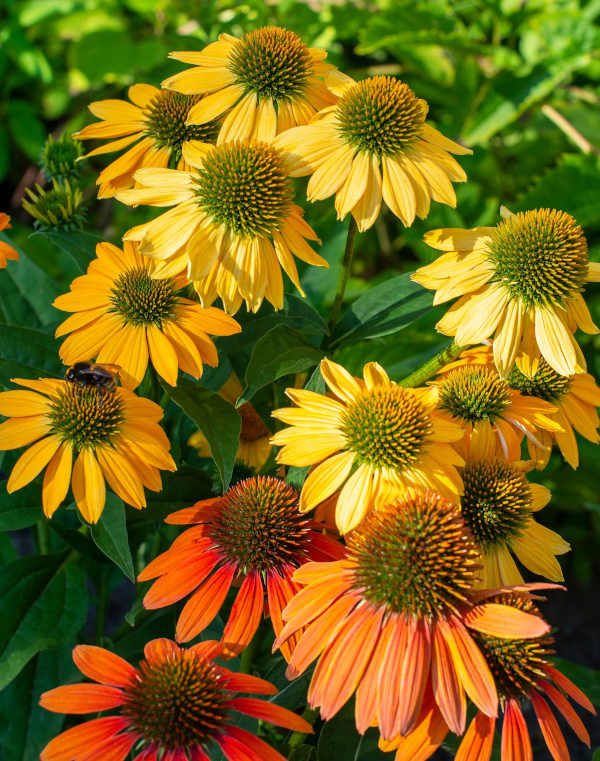
What to plant with Echinacea
Outdoors, plant alongside plants with different shaped or coloured foliage as a contrast whilst also making sure nearby plants have interest when echinacea are dormant.
Try Alstroemeria, Ceanothus, Clematis, Delphinium, Ferns and Grasses, Hardy Geranium, Roses, Pansy, and Viburnum.
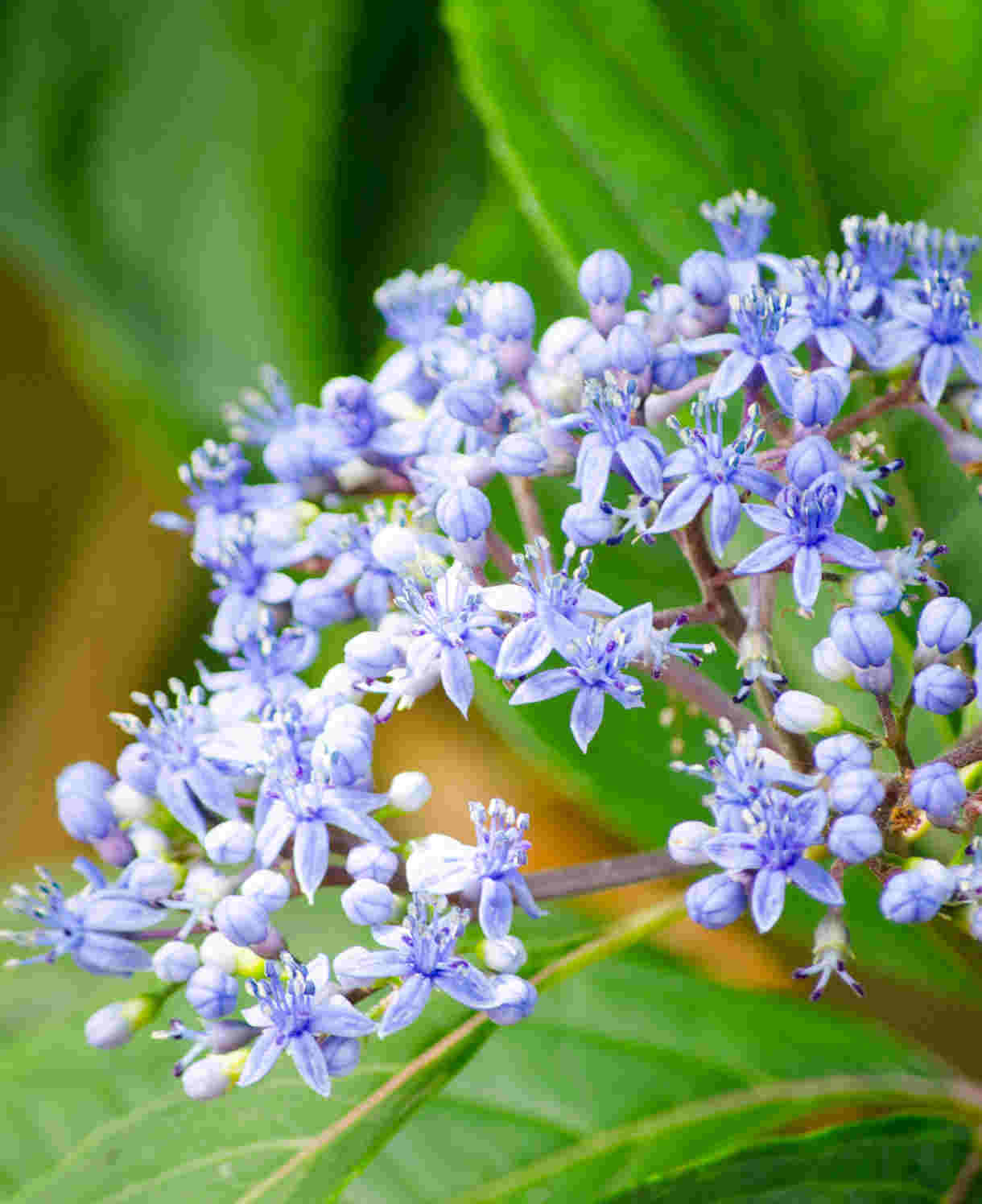
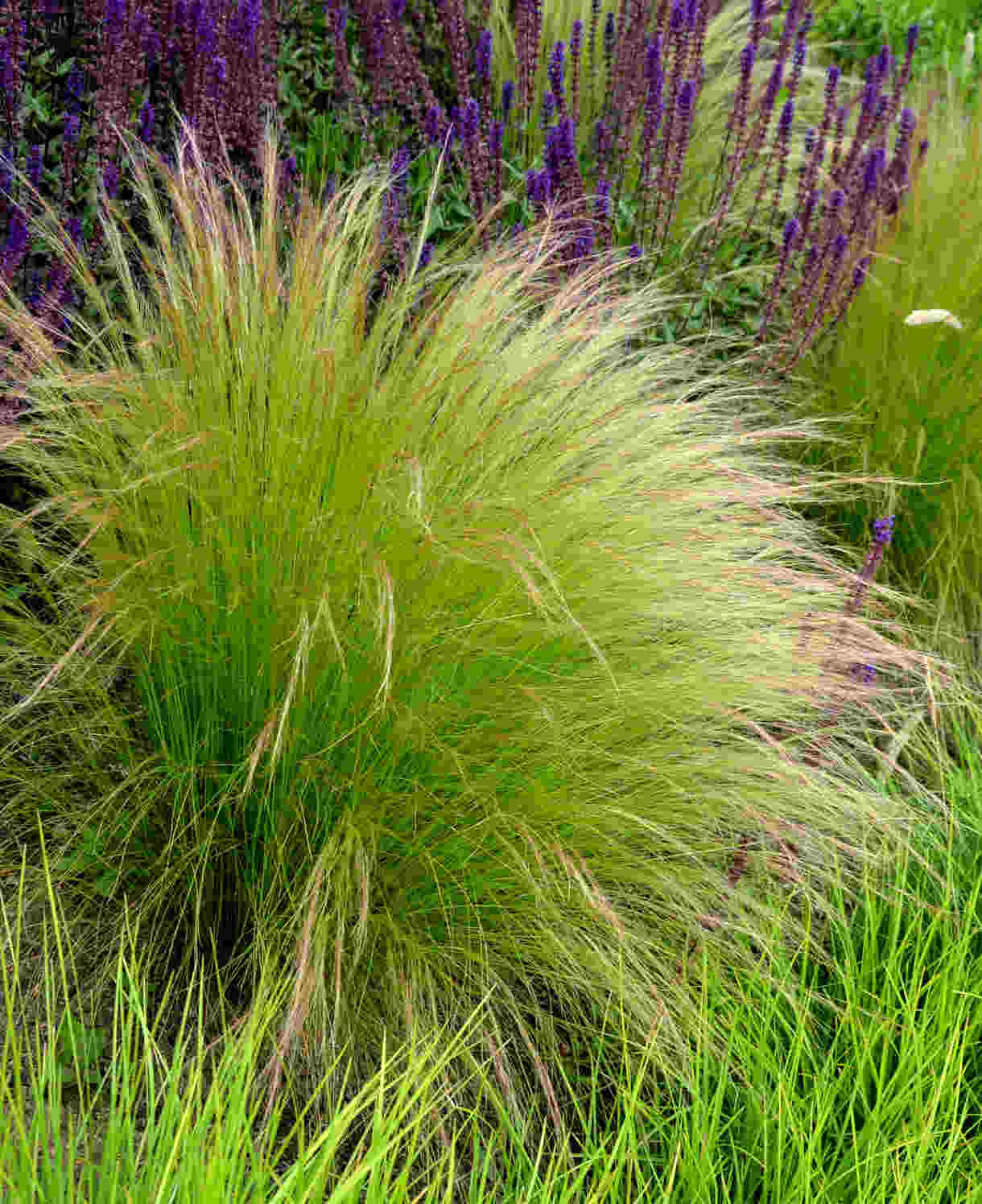
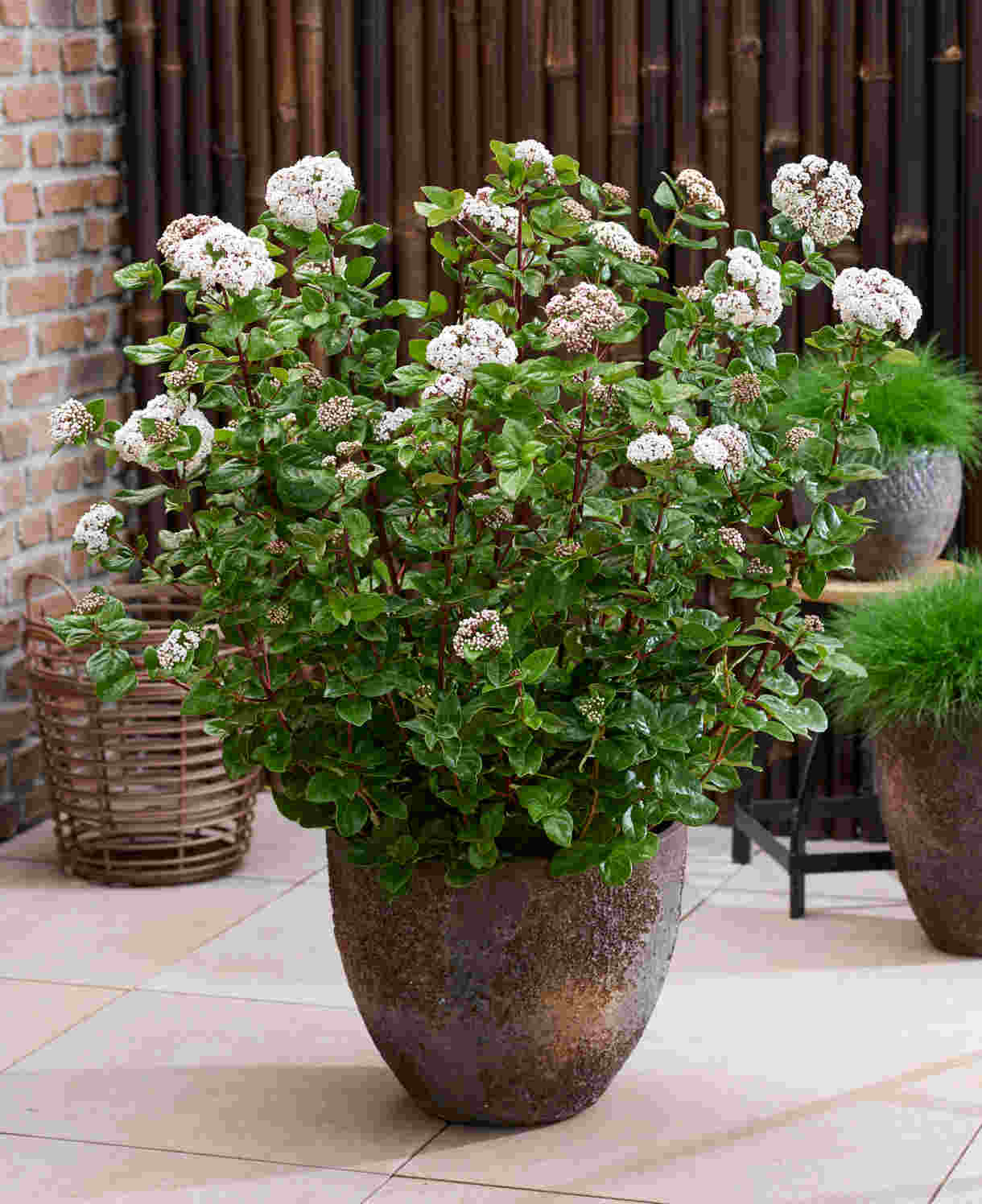
How to care for Echinacea
Pruning and Deadheading
Dead head faded flower stems of echinacea back to soil level to encourage further flower production. Echinacea make superb cut flowers.
An herbaceous perennial, simply when finished its growing season in late autumn, leave faded blooms on for architectural interest in winter. The seed heads are enjoyed by birds. Tidy if required or wait til spring cutting back all stems to ground level.
Watering
Preferring moist yet, free drained sites water sparingly.
On planting outside, they benefit from a good watering in on planting and then regular soakings until established. After this they should not need watering.
If grown in containers water the soil regularly checking the to see if the soil is dry when you wiggle your fingertip into the soil surface. Echinacea do not like to be too wet.
Feeding
On healthy, fertile soil, a mulch of well-rotted organic matter (i.e., a layer of leaf mould, manure, or garden compost applied to the soil around the plant) should provide enough nutrients for your echinacea. This has the added benefit of suppressing weeds and locking in moisture. Mulch when planting, and then again each spring.
If you garden on poor soil or your echinacea looks in need of a boost, applying a granular general purpose feed to the surface of the soil and lightly working in can reap benefits. This is known as a top dress and should be done when you’re mulching in spring – first apply the feed, then cover with the mulch. – always check your echinacea is not suffering from being too wet which is a common cause of it looking sick.
Container-grown plants are different as they rely solely on the gardener for nutrition. Get off to a flying start by making sure you use a good quality compost with slow-release granules mixed in. These generally provide nutrients for around 6 to 8 weeks, after which you’ll need to apply a liquid feed every 2-3 weeks until the end of the growing season (i.e., September-ish).
Remember to repot your echinacea every few years into a slightly larger pot using fresh compost. In-between, it’s worth removing the top few centimetres of compost each spring and replacing with a fresh mix of compost and slow-release granules.
Cold Protection
Echinacea are hardy garden plants and should not need any winter protection. Other than ensuring they are not left sitting in water. If container grown ensure water can get away from the base of container by using pot feet.
Pests and Diseases
Echinacea are generally pest free. Protect against slugs and snails.
How to propagate Echinacea
The recommended way to propagate echinacea is by root division.
When your plant is at least 3 years old and has been growing well in the previous season you should be able to divide the root structure into more plants.
Echinacea are summer flowering so require division in spring.
- Make sure the plant is not suffering from drought, pest or disease.
- Lift plants carefully by digging all around its crown with a fork.
- Shake off excess soil so you can clearly see the roots.
- With a sharp clean knife portion the root into 2 or 3 sections each containing growing tips and roots.
- Either replant the bare rooted section back into the position in the garden as described in Planting in the Garden or plant root sections into a 1 litre pot as per the instructions for Planting into a Container
- Water well and leave.
- The echinacea should show signs of shot growth within weeks.
* Many plants carry Plant Breeders Rights and cannot be propagated for commercial purposes.
Common Echinacea questions
Does Echinacea come back every year?
Yes Echinacea are herbaceous perennials. Each winter they become dormant dying down below the soil surface to a rhizomatous root system and regrow as the weather warms in spring.
Are Echinacea difficult to grow?
Echinacea are pretty easy to grow and are as rewarding for the grower as they are for the beneficial insects in your garden. They like sun and not too much water.
Can you grow Echinacea in pots?
Yes you can grow Echinacea in pots. Choose shorter varieties which will look more in balance with the container they are being grown in. If they are too tall the container will tip over in the wind.
How long does it take to grow Echinacea?
Echinacea take 2-3 years to reach their full height and spread





